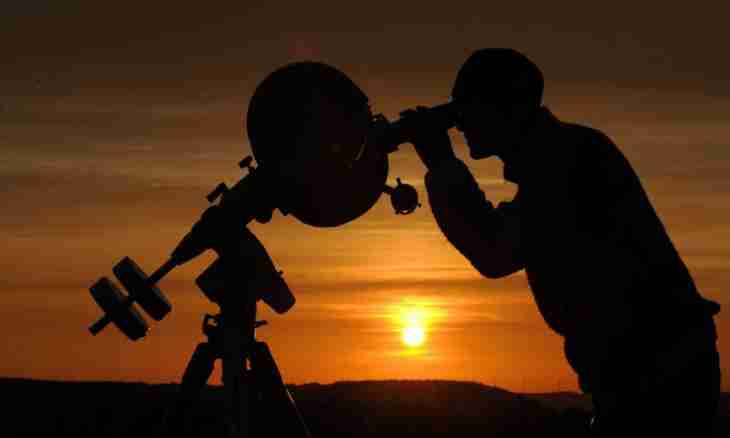Often the people who are interested in astronomy have a question - whether it is possible to observe celestial bodies in the afternoon - observe the sky as a rule at night?
Astronomical observations during daylight hours, including the Sun and the Moon, have the nuances. First, the quantity of objects, available to observation, because of a sky luminescence sharply decreases, and fogs and galaxies, hardly distinguishable at night with the naked eye, in general can drop out of sight any telescope. Secondly, only exact aiming at it on in advance known coordinates will help to find the necessary object.
View of the Moon in the 250-mm telescope
The beginning amateur astronomer observing only at night will be pleasantly surprised that, as in the afternoon in the telescope it is possible to notice some celestial bodies, especially bright planets, for example Venus or Jupiter. Everything is simple - they much more brightly than a surrounding background of the sky and therefore are well visible in the telescope. Besides, Mercury, because of the proximity to the Sun, most often can be observed in the afternoon and still sometimes in the morning and in the evening. For the same reason it is never visible in the night sky. However,
NEVER LOOK AT THE SUN IN THE TELESCOPE WITHOUT SPECIAL FILR, JUST EYES, THIS IS OPANO!!
Professional astronomers - employees of observatories - if necessary without problems observe also in the afternoon, directing telescopes on exact heavenly coordinates by means of the special program, sometimes even photographing in the near infrared range (celestial bodies turn out more contrast, than at usual shooting in visible light). Some amateur handymen observe in the afternoon and photograph not only the Moon and planets, but even some fogs and galaxies.
Passing of Mercury on a disk of the Sun on May 9, 2016. A photo via the 150-mm telescope
Readiness for day observations is necessary at observations of Mercury, Venus (which seldom have a big elongation, i.e. remoteness in the sky from the Sun), during solar eclipses, passings of Mercury on a disk of the Sun. And also in the summer during the white nights.

